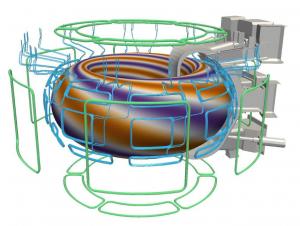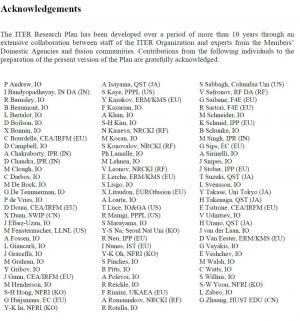The 400-page scenario
The ITER Organization has just made publically available the most recent version of the ITER Research Plan, a 400-page document that describes the present vision for operating the ITER Tokamak from First Plasma through high-fusion-gain deuterium-tritium operation.
In the staged approach, two main phases are foreseen following First Plasma:
- Pre-Fusion Plasma Operation — in which the basic controls and protection systems are demonstrated, and the auxiliary heating systems and diagnostics are fully commissioned. (Two operational campaigns are expected.)
- Fusion Power Operation — in which ITER fusion performance goals are demonstrated. ITER fusion power production goals are the production of 500 MW of fusion power with an energy gain (Q) of Q=10 for >300 s, and in-principle steady-state operation with Q=5. The development of long-pulse inductive plasmas² for fusion technology development is also envisioned. (The ITER Research Plan anticipates at least three operating campaigns to be required to achieve these goals.)
¹ The overall project schedule was approved by all ITER Members at the Nineteenth ITER Council in November 2016; the overall project cost was approved "ad referendum," meaning that each Member is seeking approval of project costs through respective governmental budget processes.
² An inductive plasma is a tokamak plasma in which the circulating current is sustained using the central solenoid, as opposed to a steady-state plasma in which the plasma current is sustained by heating and current drive sources and plasma-driven processes.



